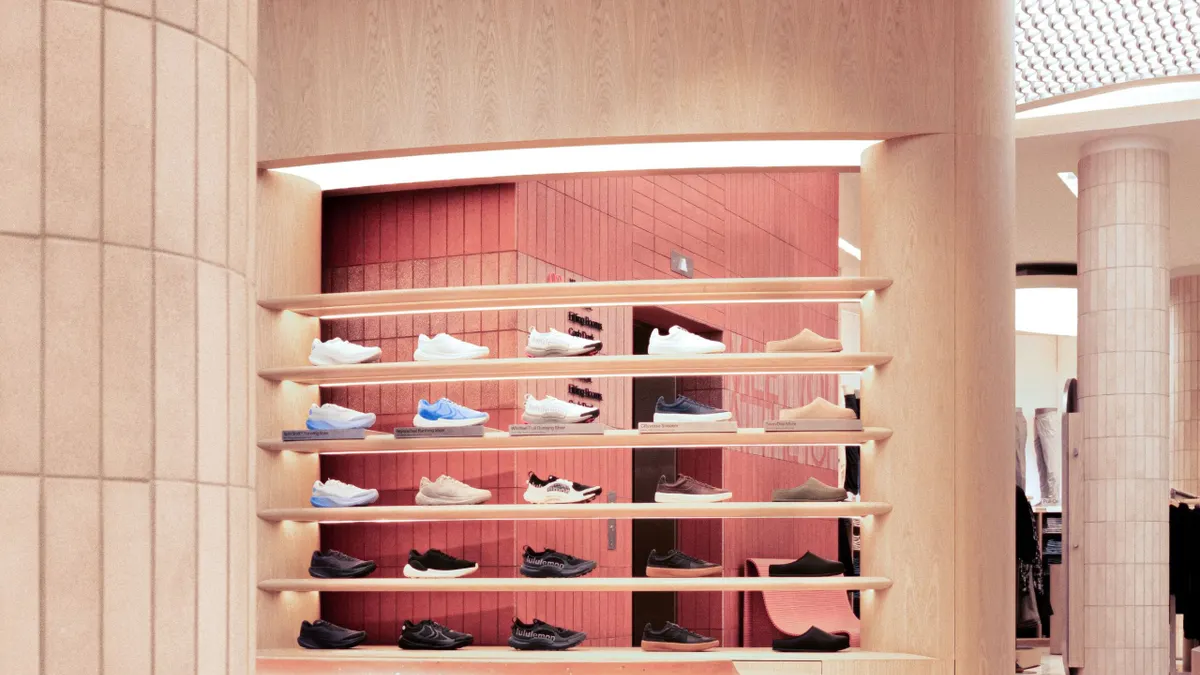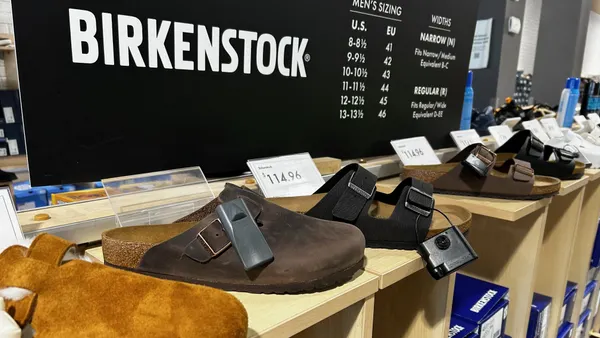Editor's note: The following is a guest post from Christopher Walton, an independent consultant and former vice president, Target Store of the Future and Anne Mezzenga of Red Archer Retail.
My business partner Anne Mezzenga and I have made the rounds of the retail trade show circuit the past few years. From the frigid January cold of NRF’s Big Show in New York to the desert landscape of Shoptalk in Las Vegas, we have taken in the best of what every show has to offer and have documented our thoughts with both unbridled enthusiasm and candor.
Last week, with a full tank of gas and minus the cigarettes, we made our best Jake and Elwood Blues Brothers impression and headed out on an eight-hour road trip from Minneapolis to Chicago and back for last week’s Internet Retailer Conference and Exhibition (IRCE).
What we found surprised us. Of the big three conferences — NRF, Shoptalk and IRCE — IRCE was the clear silver medalist, with Shoptalk taking the gold and NRF not even deserving of being on the podium.
IRCE understands what it is all about: education. If we could morph Shoptalk and IRCE, we would have the makings of an industry trade show savior-baby, floating down the river in a basket of reeds, one day ready to lead us through the transformation that is underway. But alas, that day is still far off and therefore we will continue to dream and play our part.
So after many hours in the car together, covering topics ranging from voice technology in closets to the impact of live-stream gamification on retail, here is our good, bad and ugly assessment of IRCE.
While not perfect, the show knows its identity and there is much to learn from its approach.
The good
Education focus
Cancel Christmas! A trade show finally embarked on the librarian-style education vision we espoused on Retail Dive earlier this year. FitForCommere and IRCE partnered together to create a gigantic wall board of different topics pertaining to e-commerce retailers from payments to analytics and reporting, with all the various technology providers pertaining to each listed easily for everyone to see.
We loved this! If you happened to have a question about selling products on a marketplace, here was a gigantic board or takeaway leaflet of the various options to explore while at the show.
It was like being in college again, both in the sense that FitForCommerce was playing the role of the college librarian and also in that many of the trade show goers using their services were probably hungover from their previous nights out in Chicago, too.
For a conference like IRCE, whose attendees are mainly small- to medium-size direct-to-consumer e-commerce players, this approach was no doubt exactly the hair-of-the-dog they needed.
The flipped funnel
IRCE was the first show we have attended were the concept of a "flipped" consumer funnel was absolutely palpable, like David Beckham in a pair of skivvies.
Wonderful keynote speaker, Seth Godin, hit the conference high note saying as much, when he discussed how the days of thinking traditionally about the consumer funnel were over and that instead companies need to "flip the funnel" and to "give their megaphones to their best customers."
While we had seen touches of this sentiment previously, acknowledging how brands begin from the bottom up and not the top down, like Glossier at Shoptalk, the zeitgeist has clearly gained momentum. Companies are beginning to cede control to their customers to build their brands.
Is it scary? Sure as sh*t.
Will mistakes be made? Abso-freaking-lutely.
But like Godin also said, "the person who invented the ship also invented the shipwreck." Our industry is buying into this philosophy more every day. It is a more inspiring and authentic approach to retail.
The e-commerce industry gets the punchline to this joke better than legacy brick-and-mortar players.
The Bad
The digital mall is the new normal
There is no fighting it anymore — the physical mall is giving way to the digital mall. We all know that physical malls are in rough shape, but what we do not discuss as much as we probably should is how a new online, digital mall landscape is taking shape.
We have seen the trend recently, with companies like Chico’s and Ikea agreeing to sell their products on Amazon. With nearly half of all first-product searches starting on Amazon and with consumers no longer needing malls as a way to facilitate product acquisition, consumers are starting to look to online marketplaces as their new de facto "malls."
No where was this more evident than the Walmart/Jet.com booth. The booth was set up unabashedly to lure the e-commerce players in attendance to come onto Walmart’s marketplace instead of Amazon's. It was a living example of why Walmart is positioning Lord & Taylor the way it has too.
The battle is now on between Amazon and Walmart to damn up the fast rushing water in this space, but they are both still Amazon and Walmart. How many brands really want either of them to be the 21st Century version of the American mall? Better yet, how many consumers really want that as well?
There is still tremendous white space for another player to come into this space and to carve out its own niche. Are you listening Macy’s?
Probably not.
Amazon is the monster in the closet
Amazon, even though it was light in attendance — or to be honest, 100% absent — was everywhere. Amazon loomed like the monster in the closet of a 3-year-old. Don’t mistake us either, this statement does not mean Amazon is necessarily a bad monster. It is just that, like a curious toddler, we know Amazon is in the closet and that could be friendly or mean as hell. Either way, it makes it hard for us to sleep at night.
Look no further than the entire full day on Tuesday devoted to a workshop entitled, "Amazon & Me." While it sounds like an Owen Wilson and Jennifer Aniston movie, rest assured there were not any cute puppies in this one.
Amazon is now the way of life. It is now the cost of entry for doing business at scale for so many retailers.
The ugly
Stand-up comedians
IRCE made the decision to have a stand-up comedian emcee the keynote presentations every morning of the show. We will spare you the comedians name because, honestly, he did the best he could. The blame should instead fall on the show’s organizers.
This approach was a bad move for a few reasons. First, the audience is tired and busy. We do not want to listen to a "shtick" at the beginning or in between every important presenter. We are there to learn.
Second, it does not feel authentic. The show organizers took a back seat and were almost invisible, giving way to an almost manufactured show feel vs. a "we are in this together" ethos.
A better approach would have been to hit on the education theme discussed above in further detail with respected leaders from the show staff and from the industry every morning.
E-commerce may be inside its own echo chamber
The industry likes to think that e-commerce pure plays are the cool, new kids on the block, but they are not. E-commerce has been around for decades, which is why the conference’s keynote origin stories of Warby Parker and Houzz and many of the breakout speaker sessions were disconcerting.
The industry needs new approaches to retailing. Omnichannel retailing is neither bricks, nor is it clicks. It is a new blend of both and we need to start hearing more from the best vintners on the subject.
While the Warby and Houzz origin stories are always interesting, they are both well-known at this point. So, too, are all the incremental stories and advice on how to "optimize" an e-commerce business a little better every day. There should always be a place for them, especially given IRCE’s audience, but there also needs to be more time devoted to the next frontier of "omnichannel-native" retail leadership — efforts like Nordstrom Local or companies like Fabletics, Brandless and even Ikea.
It is within the e-commerce wheelhouse to think linearly, but the new world of retailing is non-linear. The days of step one, build a website and step two, build a store are over.
The leaders of tomorrow will do them both at the same time.





















